EN

They're adults, but they look like children playing (for real) with aeroplanes. We're talking about aeromodellers, like Manuel Cardoso. Agenda Porto went flying with him (without leaving the ground).
It's in a small workshop on the Escadas do Barredo, in the heart of the Ribeira, that we meet him, always back in his aeroplanes. Manuel is a founding member - and president since 2004 - of the Clube de Aeromodelismo do Norte (North Aeromodelling Club), which organises various meetings in the sport, including the International Meeting of Hydroplanes in Moimenta da Beira. ‘We do it every year at Albufeira de Vilar; they have four-metre Canadairs there that carry 10 litres of water, and they sometimes jokingly unload them over the people when it's very hot,’ he says, laughing, adding that “there are a lot of Spaniards” taking part in this meeting.
Born in Tarouca, after finishing fourth grade at the age of 11, Manuel went to work in a grocery store, and at the age of 12 he moved to Porto, where his family already lived and owned the Porta Larga restaurant in Ribeira. In 1971, he moved to Luanda with his parents, where he studied and worked, and began to covet the aeroplanes he saw in shop windows, ‘but they were very expensive’. ‘Ever since I was a kid, I've liked to look at aeroplanes.’
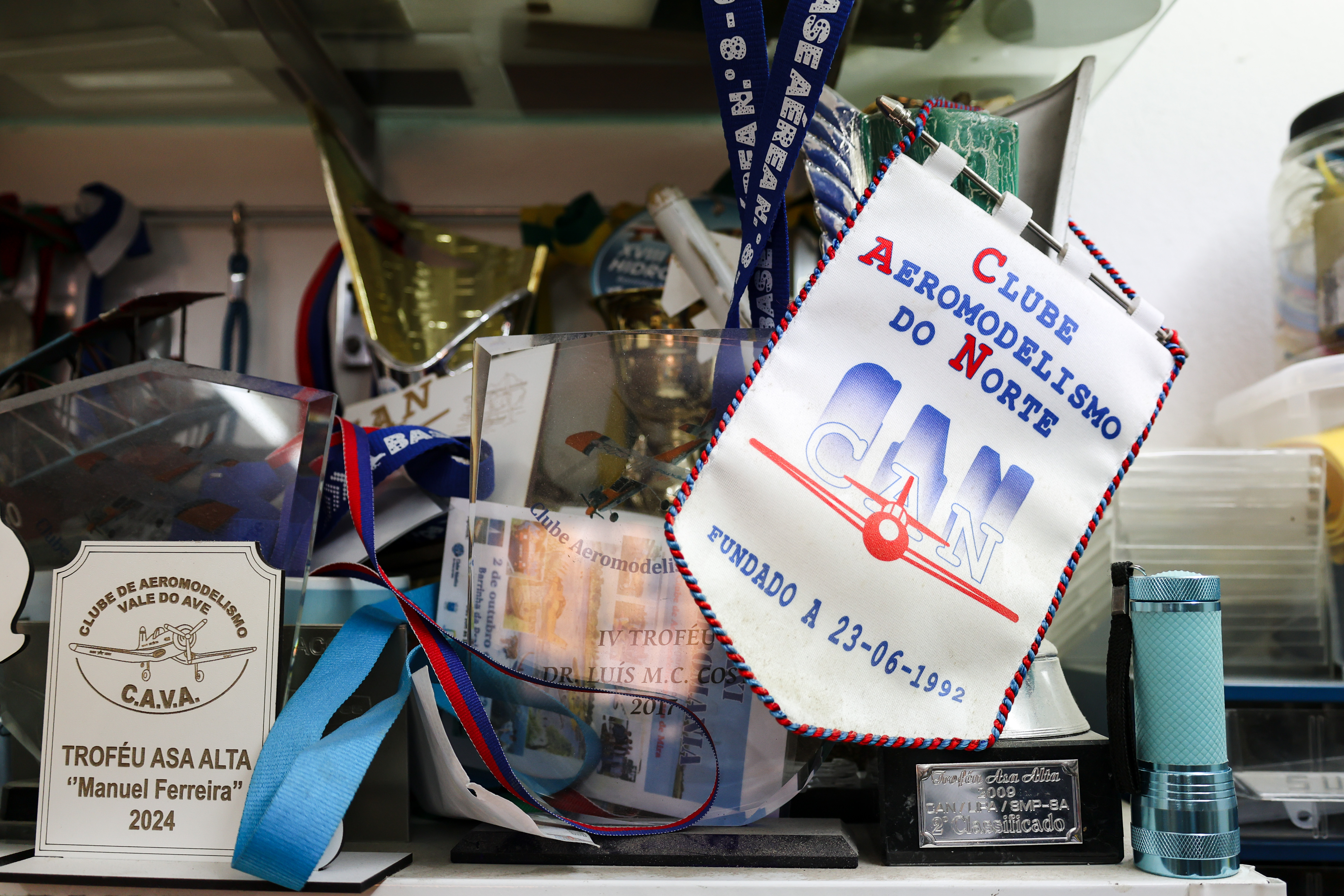
© Inês Aleixo
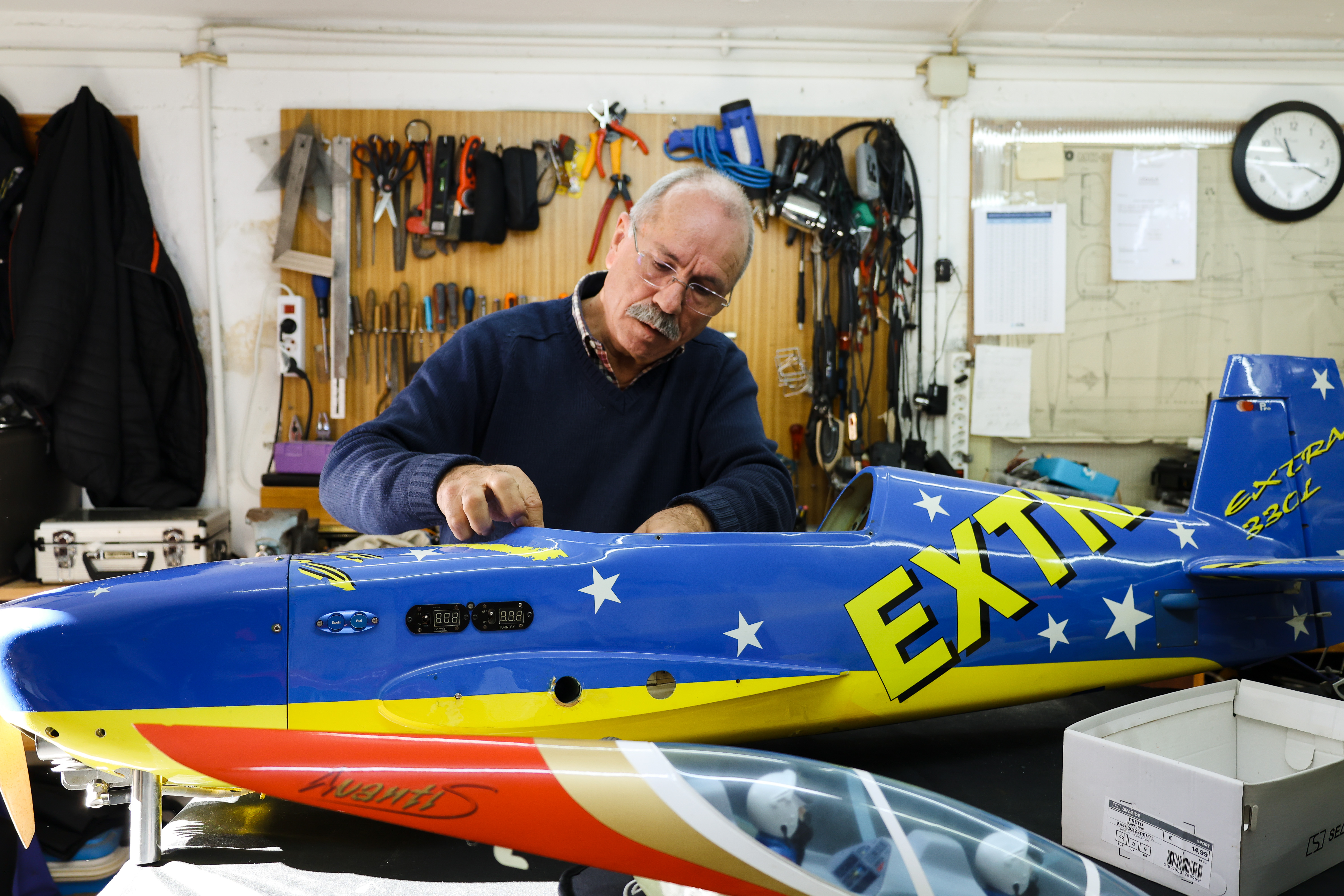
© Inês Aleixo
In 1975, he returned to Porto and worked in his aunt and uncle's restaurant. It was in 1982, while serving in the Serra do Pilar Artillery Regiment (RASP), that he began to build his first model, using a plan provided by a fellow athlete who was playing for FCP at the time. ‘I started there, with a plan; I bought the balsa (wood) in Rua da Fábrica, with which I built a high wing, which are the models that have a wing on top, like the Cessna, which glide better than the others; these are the models we use to teach.’ Since then, he has lost count of the number of models he has built.
For five years, he worked in an aviary in Cucujães. In 1989, he joined an international freight and goods transport company, but ‘it didn't work out’ because he didn't have his weekends free to devote to aeromodelling. ‘As I really liked aeroplanes and I practise at the weekend, it wasn't compatible.’ He was a lorry driver for 34 years, but ‘indoors’. Since retiring, he has devoted himself full-time to his passion. ‘I'm here every day, it's my job now. Since I finished my job, I make my own timetable, I come here at half past nine, I go for lunch at half past twelve, and I come back from two to six,’ he says, and assures us that “there's always something to do”.
Eyes on the sky
Manuel says that a few decades ago there were only ‘two or three runways’ for the sport, and that he used to go to the Espinho runway on Saturdays to learn to fly, when, he admits, he ‘felt [a certain discrimination].’ ‘I'd get there with my [modest] model, and people would almost look at me sideways. It was the elite, wasn't it? The engineers, the ‘doctors’, who had money and the chance to have expensive models. I'd put the aeroplane on the ground to see if anyone would help me, but there were many days when I'd leave without flying because there was no one to teach me... And that started to make me angry,’ he says.
It was then, in 1992, together with six other enthusiasts of the sport, that he created the Clube de Aeromodelismo do Norte. ‘We created the club and said ‘at the entrance to the runway, the doctors stay outside; inside we're all aeromodellers’, which is really how it is. There are no little groups here,’ he laughs.
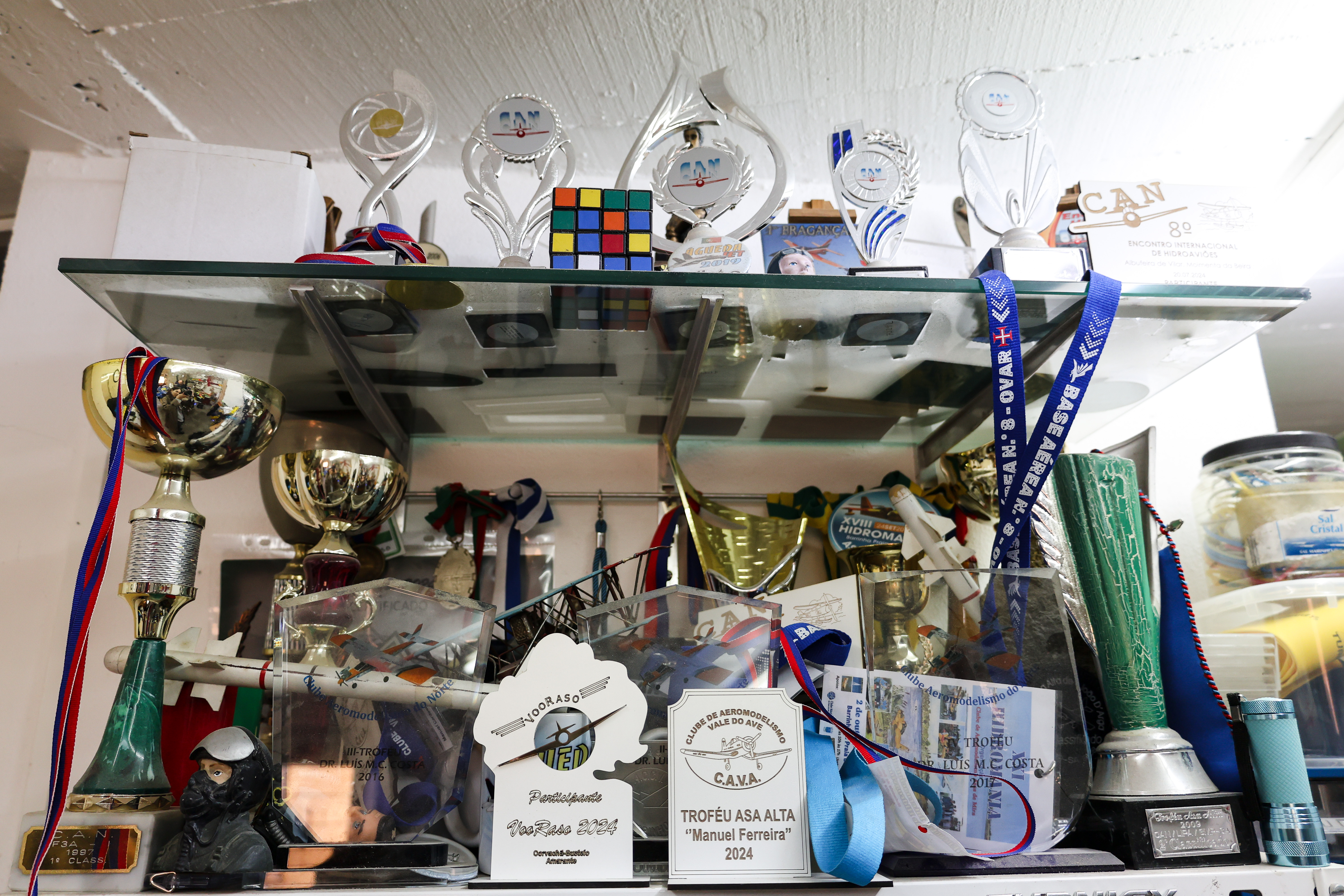
© Inês Aleixo
The club currently has around 50 members, but once had 160. ‘If the club doesn't have a track, it's harder to get members.’ Until 1998, the club had a 200-metre tarmac in Seroa, Paços de Ferreira. Between 1998 and 2004, it had no runway, and aeromodellers used to use the Maceda (Ovar) air base, where they are authorised to fly on Saturdays and Sundays. Since 2005, it has had an airstrip in Pedorido, Castelo Paiva, on the site of the old Pejão Mines. If the weather is good, that's where you'll find Manuel on Saturdays, with his eyes on the sky, flying his aeroplanes and controlling his paratroopers.
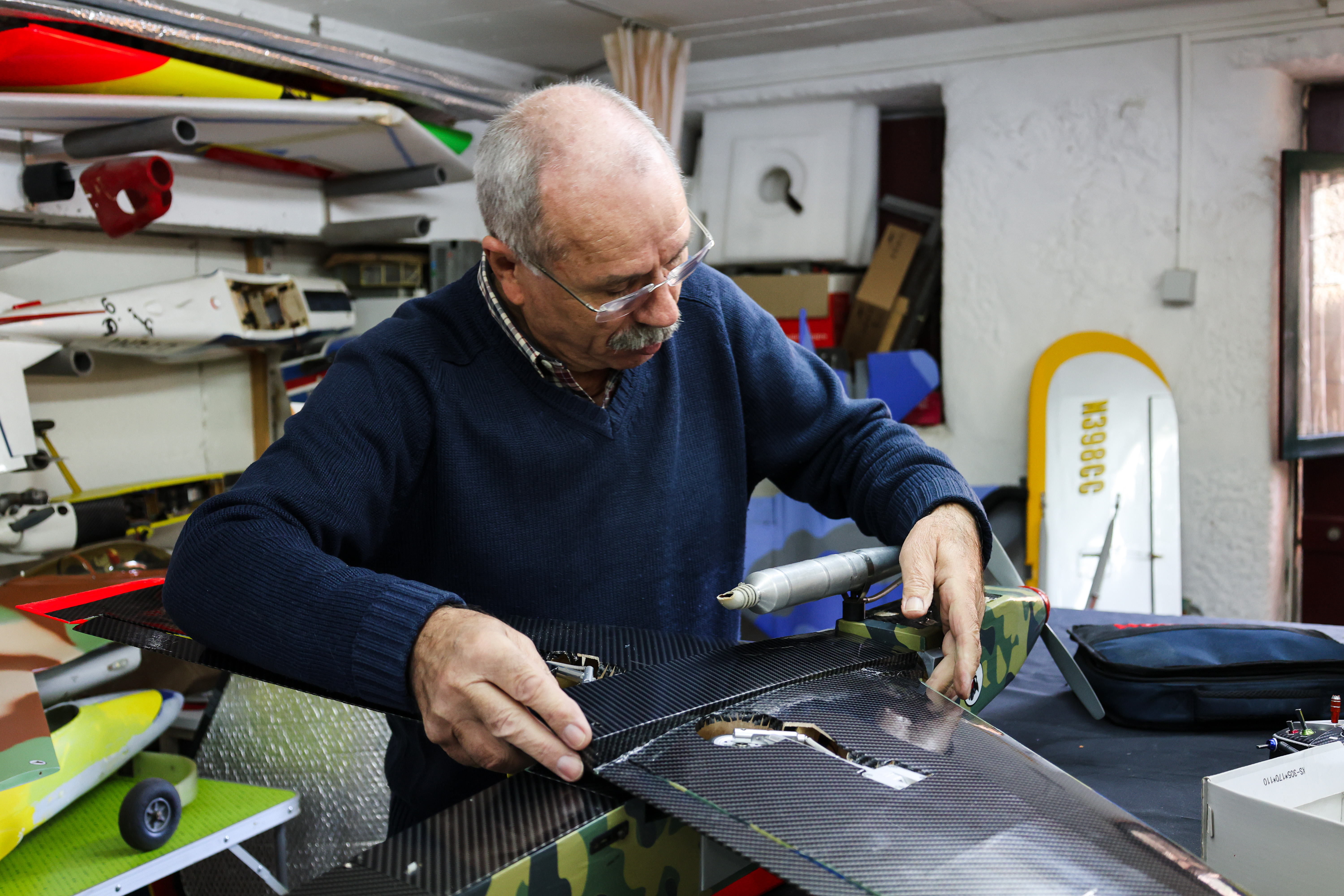
© Inês Aleixo
A hobby on the expensive side
‘People say that aeromodelling is very expensive, and it can be when you start ‘getting into’ certain models,’ he says, while showing us a model that costs over two thousand euros. ‘The kit alone, all in fibre, costs 600 euros, but then there are the applications, the engines; then it becomes an expensive hobby.’ But there are also cheap models.
When he started aeromodelling, Manuel couldn't afford expensive models, so he learnt to build. Aerodynamics, electronics, physics, carpentry and metalwork are all skills he acquired. Some people say that aeromodelling is one of the most ‘mentally healthy’ sports.
‘Building a model can take three months.’ And he gives the example of an all-wood seaplane, glued together with white glue, ‘the most labour-intensive model’ he has built. ‘I leave a piece to be glued together overnight, that's a lot of hours spent, but I like it because that's how I started,’ he tells us. ‘It doesn't scare me to repair a model that's broken, and I've already remade models.’
With the same remote control, Manuel manages to control all his aeroplanes. Among the various models, he highlights a Patriot model in a kit he assembled himself, all in wood, in 1998. ‘It only broke once,’ he says. He also highlights two F16s, one in styrofoam and the other in fibreglass and wood - one of his favourites. ‘An aeroplane like this, powered by a turbine, takes off at a very high speed, which in the air can easily reach 300 km/hour,’ he says.
by Gina Macedo
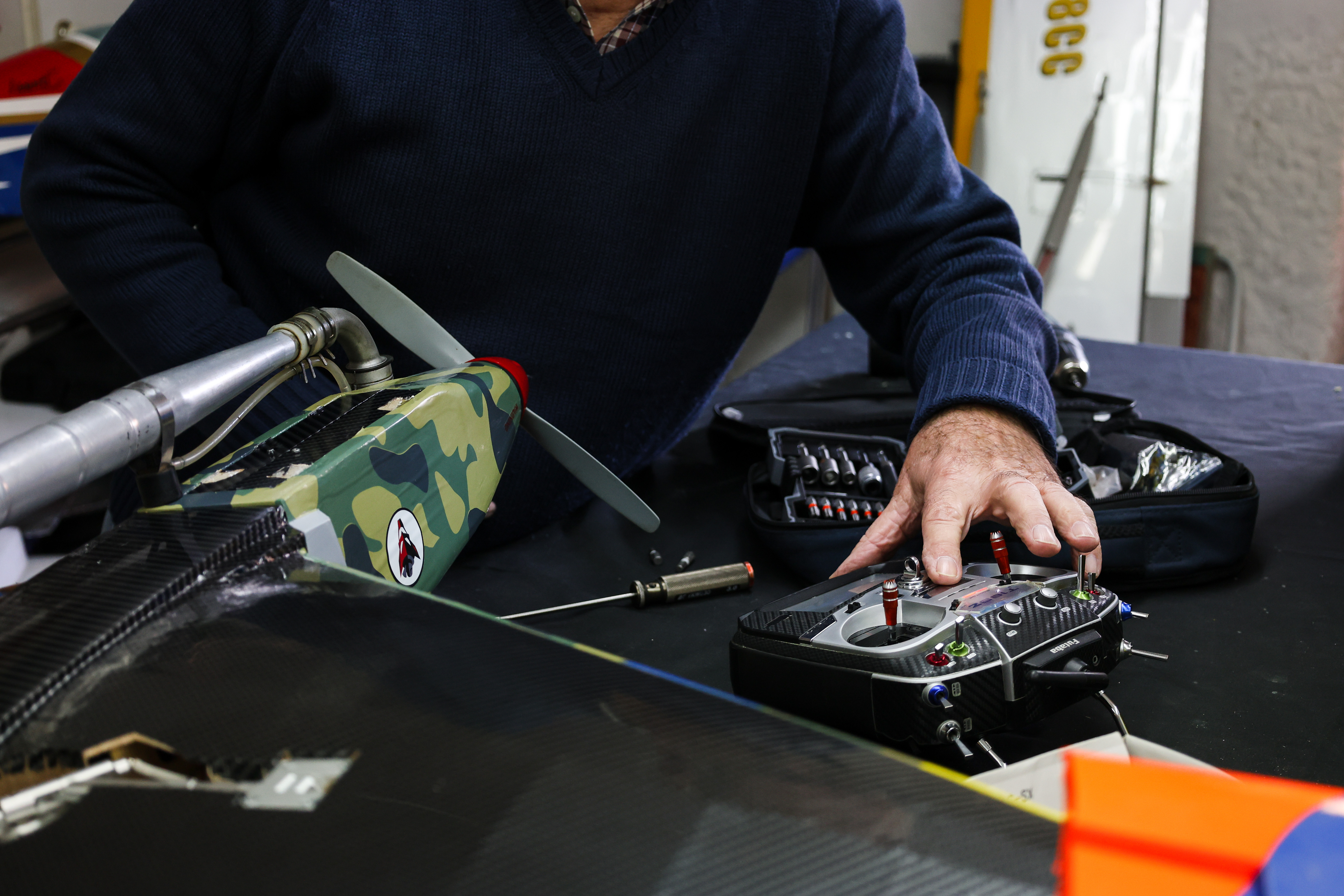
© Inês Aleixo
Share
FB
X
WA
LINK
Relacionados


